If you’re living with a disability, small design choices can make a big difference to your quality of life. High bathroom consoles make it hard to wash your hands from a wheelchair; low sofas are hard to get out of when you have a knee condition.
Today, Pottery Barn is launching a furniture collection designed to be accessible to the elderly, the injured, and those living with disabilities, making it one of the first large home brands to do so. In consultation with experts, the company’s designers adapted 150 best-selling styles—from dining tables to office desks—to accommodate a range of disabilities.
Pottery Barn’s Accessible Home line gives consumers more options for furniture that is both functional and stylish. And as a major retailer—whose parent company, Williams-Sonoma, generated $8.2 billion in 2021—this initiative may signal to the rest of the industry that it makes good business sense to design more inclusively.
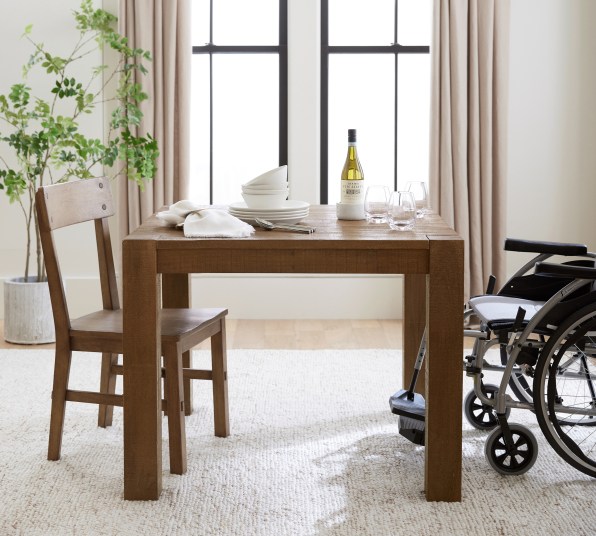
Marta Benson, Pottery Barn’s president, felt strongly that the brand should launch an accessible home collection after she visited one of its stores, only to find that the bathroom didn’t contain Pottery Barn furniture. When she asked a store designer why, he pointed out that none of Pottery Barn’s bathroom consoles complied with the Americans with Disabilities Act (ADA), which requires public bathrooms to have wheelchair-accessible sinks. “I said, ‘Are you kidding me?’” she recalls. “From that moment, I just started tuning into what it means to be inclusive and accessible to all abilities.”
Benson tasked Pottery Barn’s designers with creating modified versions of some of the brand’s most popular products to make them safer and easier for people with disabilities to use. To guide them, she brought in experts from the Disability Education and Advocacy Network, which is led by people with disabilities, as well as designers who specialize in designing for disability.
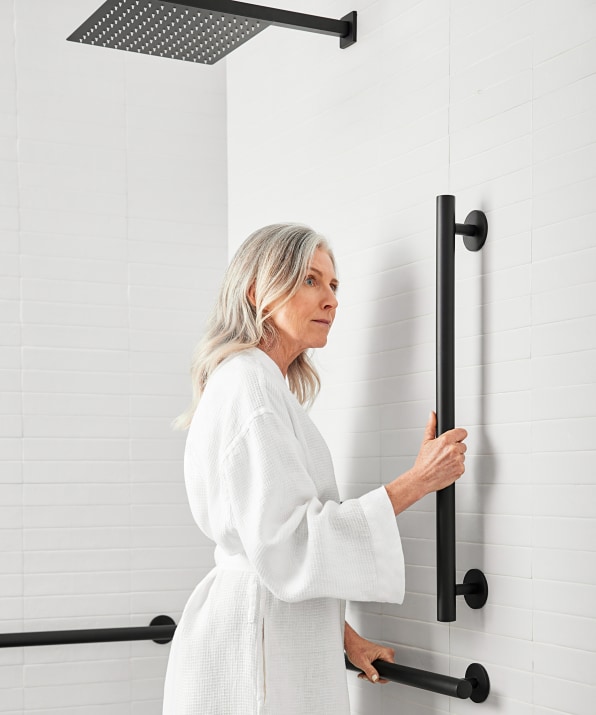
One of those experts is Lisa Cini, founder and CEO of Mosaic Design Studio, and a leading designer in the field of long-term care and Alzheimer’s. She’s known for a project called the Werner House, a 10,000-square-foot mansion she purchased in 2019 in Columbus, Ohio. Her goal was to explore what it takes to create an inclusive, multigenerational house, and she invited designers and manufacturers to help renovate it. It’s equipped with technology like height-adjustable sinks and toilets, and transitions in flooring to make it easier for people to age in place. Cini herself lives in the house with her elderly parents and makes adjustments based on the family’s everyday experiences.
Cini and the Pottery Barn team used the Werner House to help create the Accessible Home line. “We looked at all the current Pottery Barn products and determined what was most appropriate for the Werner House, but we also identified gaps in the market,” Cini said via email.
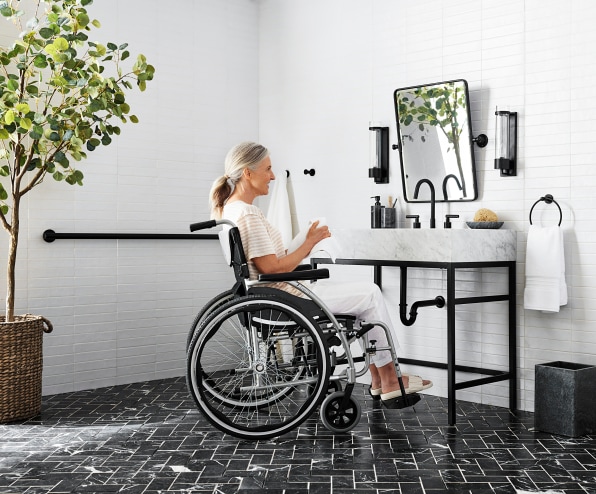
In some cases, the designers made small tweaks to existing products. For instance, they redesigned mirrors so they can tilt, making it easier for those in wheelchairs to easily see themselves. They also created modified versions of popular office desks, like the Pacific, Dillon, and Malcolm, with dimensions that accommodate wheelchairs. These desks also feature open storage and shelving, to eliminate the need to grip and pull drawers.
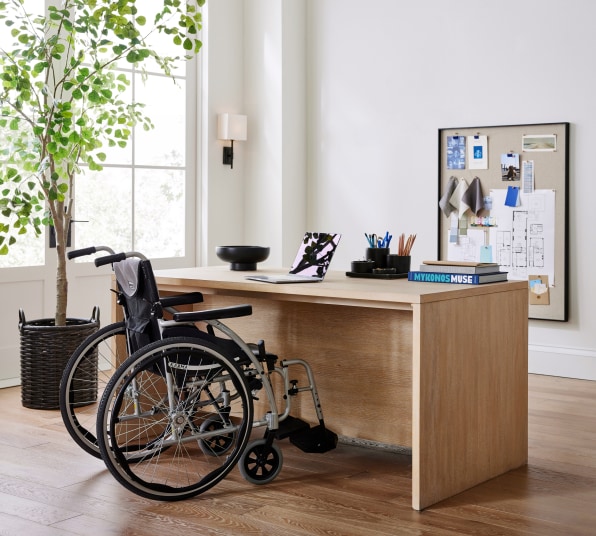
Some products required more elaborate changes. The brand has taken its most popular armchairs—Wells, Irving, Tyler, and Ayden—and adapted them to include power lift, which makes it easier to get in and out of the chair. The chairs are also able to move in every direction, which relieves pressure and stress on the body. The 150 products will be available online and in select stores, and they’ll be the same price point as the original versions.
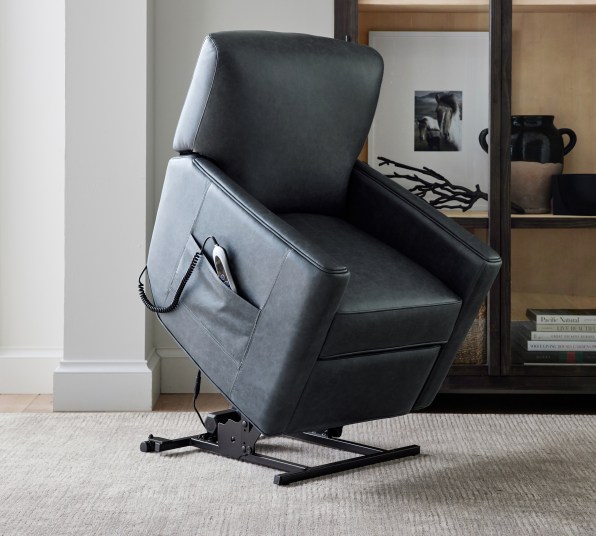
For Benson, it was important for all the pieces to be pleasing to the eye and fit neatly into the the Pottery Barn aesthetic. When she surveyed the market, she noticed that many products designed for people with disabilities focused on functionality, but tended to look clinical. “We don’t want customers to feel like they live in a hospital,” she says. “We wanted to adapt our vernacular, our beautiful reclaimed-wood finishes, to these products. You shouldn’t have to compromise design to have this functionality.”
Benson believes this collection will be good for business. She points out that Pottery Barn reaches a broad swath of consumers, including people choosing to age in place, and they may want to renovate their homes with products from this collection.
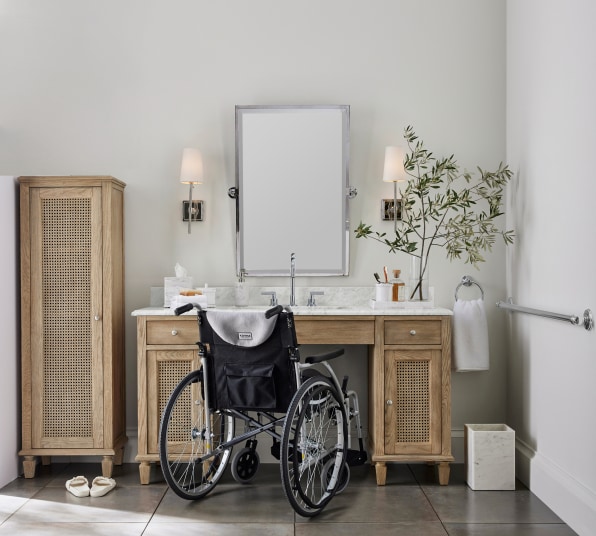
Aimi Hamraie, an associate professor of medicine, health, and society at Vanderbilt University who specializes in disability studies, says it’s a good thing that Pottery Barn is focusing on inclusivity. “There’s a long history of people with disabilities fighting to gain access to consumer products designed for their needs,” they say. “The ADA only addresses areas of public accommodation and employment, so brands that make home goods haven’t felt compelled legally to make products for this community.”
But Hamraie points out that Pottery Barn creates high-end products that will likely be out of reach for many people with disabilities, who tend to have lower incomes. “Using the market as a solution can be fraught because many disabled people have income restrictions, so the ability to access a middle-class amenity can be a barrier,” they say. And while it is valuable to focus on the needs of the elderly, Hamraie says it is, in some ways, a luxury to grow old. “Not everyone gets to live into old age,” they say. “There are social determinants, like demographics and access to health insurance, which dictate who dies young.”
Still, Pottery Barn’s collection could send a signal to the market that there’s money to be made in serving the needs of disabled consumers and creating products that will allow homes to be more inclusive of people with disabilities. Ultimately, a line like this could nudge mass-market retailers like Target, Amazon, or Walmart to create stylish, accessible home goods.
Benson admits that developing this collection required a lot of research and learning for the Pottery Barn team; but ultimately, it’s just the beginning. Going forward, designers will be focused on adapting products from each season to the needs of people with disabilities. “We want to keep building partnerships with people in this community,” she says. “We’re approaching this with a fair amount of humility, and we’re eager to keep learning.”


